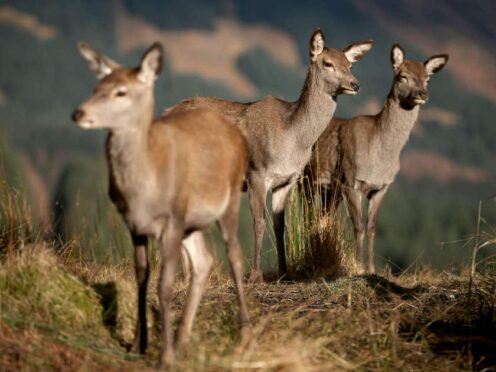
A shooting organisation has voiced concerns that changes to deer management proposed by the Scottish Government could contravene human rights.
The British Association for Shooting and Conservation (BASC) has written to biodiversity minister Lorna Slater to express its misgivings ahead of a consultation on the plans closing on Friday.
Ministers propose creating new deer management nature restoration orders (DMNROs), which would give additional powers to nature agency NatureScot.
These could see a “range of deer management actions required” – including culling – in order to encourage nature restoration.
In its letter to Ms Slater, BASC said DMNROs would be “highly susceptible to judicial review or other legal challenge”.
Not complying with an action requirement under a DMNRO would be an offence, the Scottish Government consultation says.
Peter Clark, BASC Scotland director, said: “We do not consider deer to be a national problem, rather that certain species in certain areas are a problem.
“A more targeted approach should be adopted, rather than the draconian powers brought about by the DMNRO. The plan to impose a penalty on landowners for non-compliance with the new orders, in the form of a £40,000 fine and three months imprisonment, is an egregious example of this.
“DMNROs could interfere with basic rights outlined in the European Convention on Human Rights (ECHR), because unlike current powers around control orders, they lack a rational and well-explained basis for their imposition.
“The Scottish Government cannot keep introducing more regulation on deer management without the necessary incentivisation for deer managers.”
BASC said that DMNROs are poorly defined and rely on subjective terms like “restoration of nature” and “social, economic, or environmental benefits” which would lead to wide discretion without detailed guidance for land managers.
The organisation said it is concerned that the imposition of “unreasonable, poorly explained and disproportionate legislation” affecting landowners and occupiers does not contribute to the maintenance of good working relationships between the Government and rural stakeholders.
Biodiversity minister Lorna Slater said: “Improving our natural environment and tackling the climate crisis through tree-planting, woodland regeneration and peatland restoration would not be possible without effective deer management.
“We need to get the right balance of wild deer in the right areas to maximise environmental benefits they can bring as part of a healthy, functioning ecosystem.
“Deer provide important employment and social opportunities to rural communities and form an iconic part of Scotland’s landscape.
“This consultation is an opportunity for people across Scotland to have their say on further proposals to improve the management of deer populations and to help shape future legislation.”

Enjoy the convenience of having The Sunday Post delivered as a digital ePaper straight to your smartphone, tablet or computer.
Subscribe for only £5.49 a month and enjoy all the benefits of the printed paper as a digital replica.
Subscribe